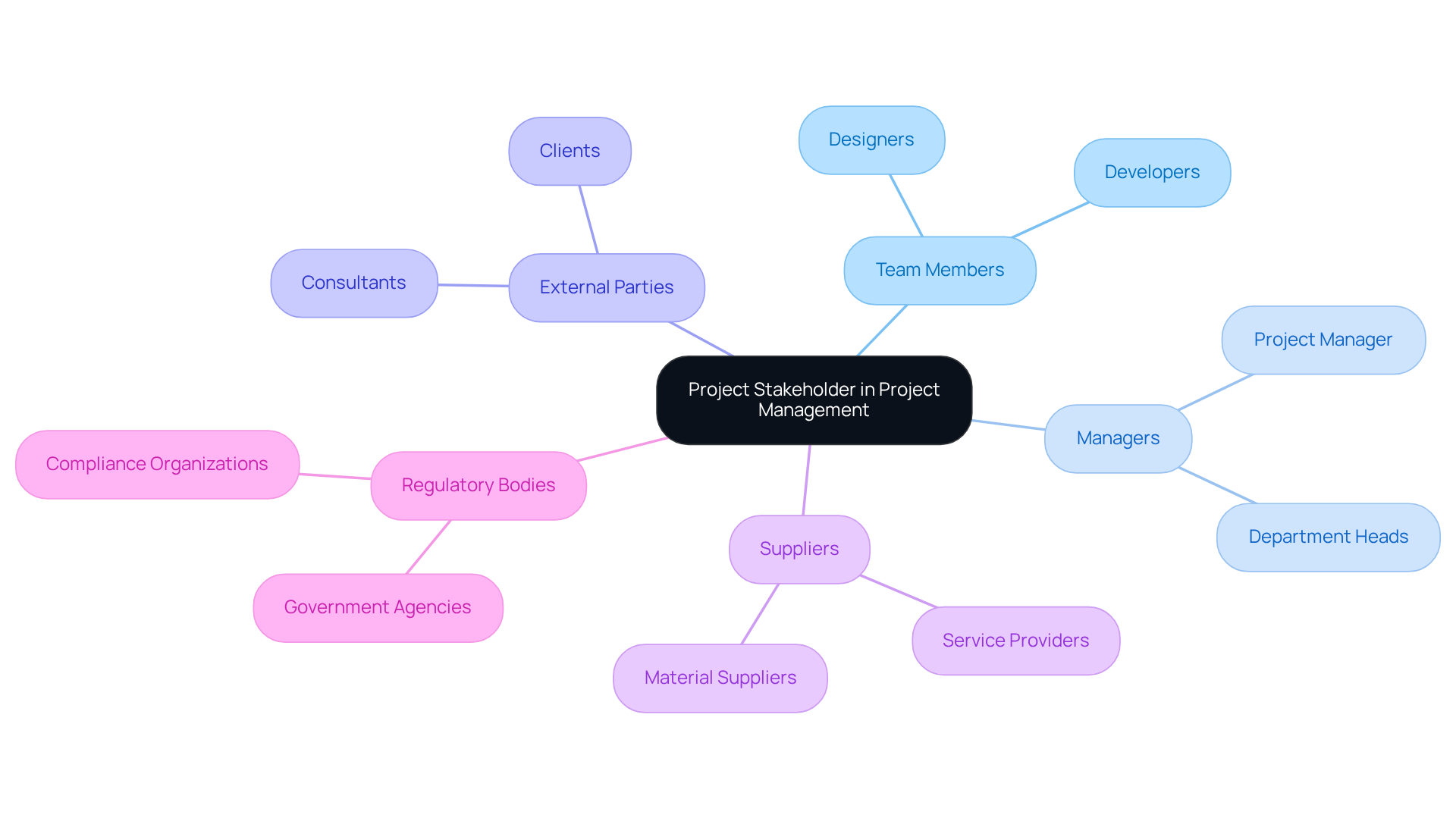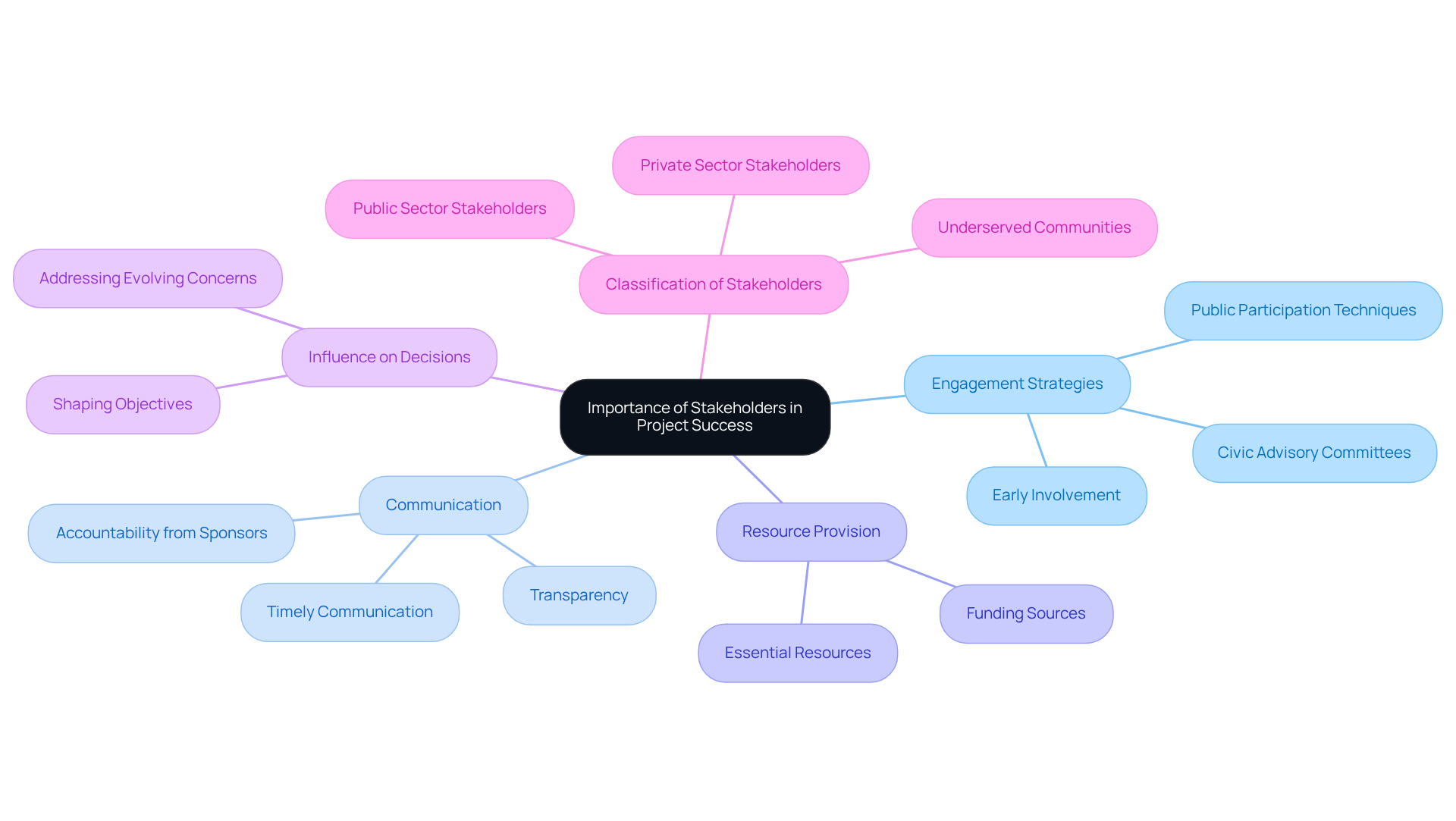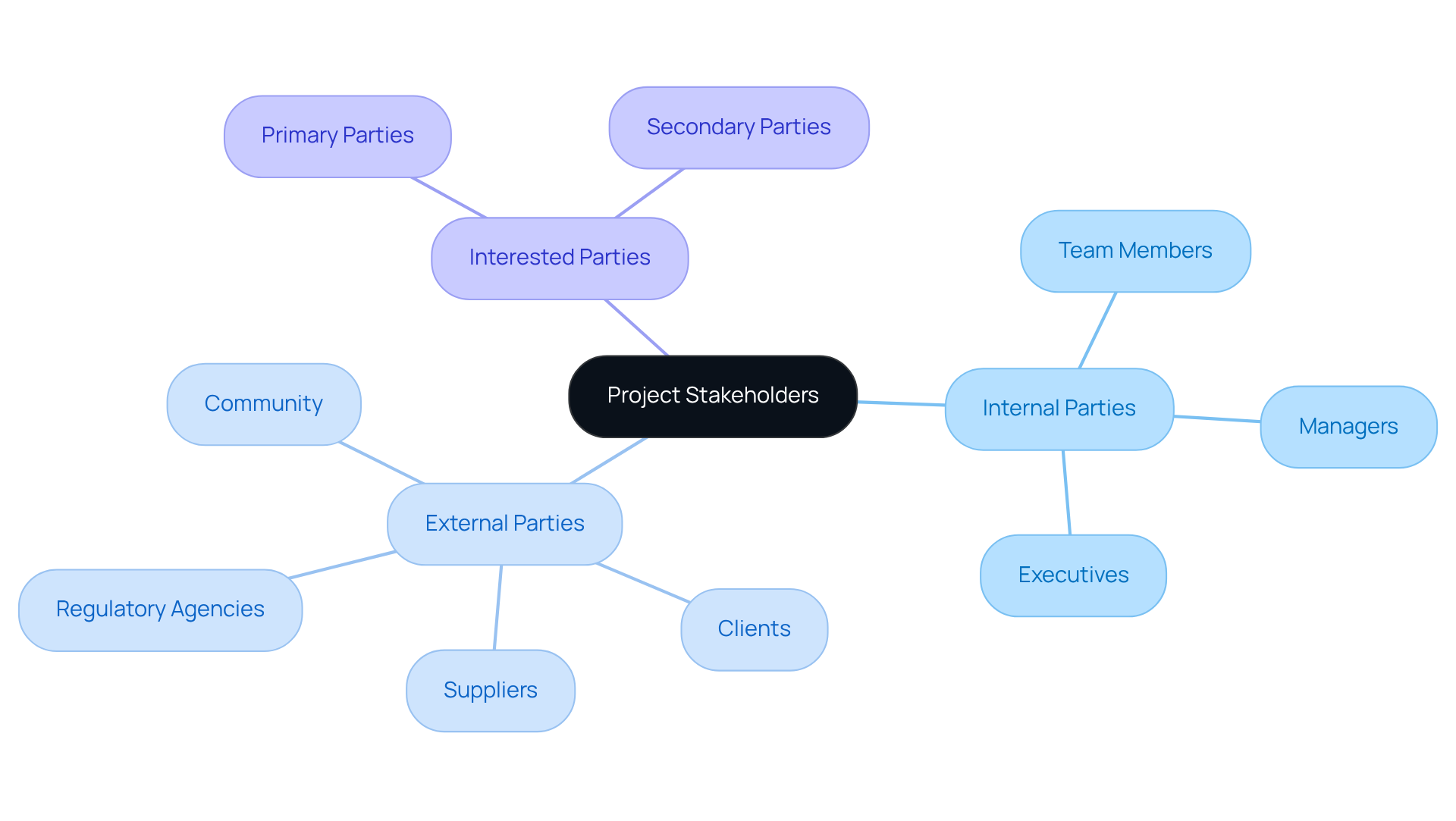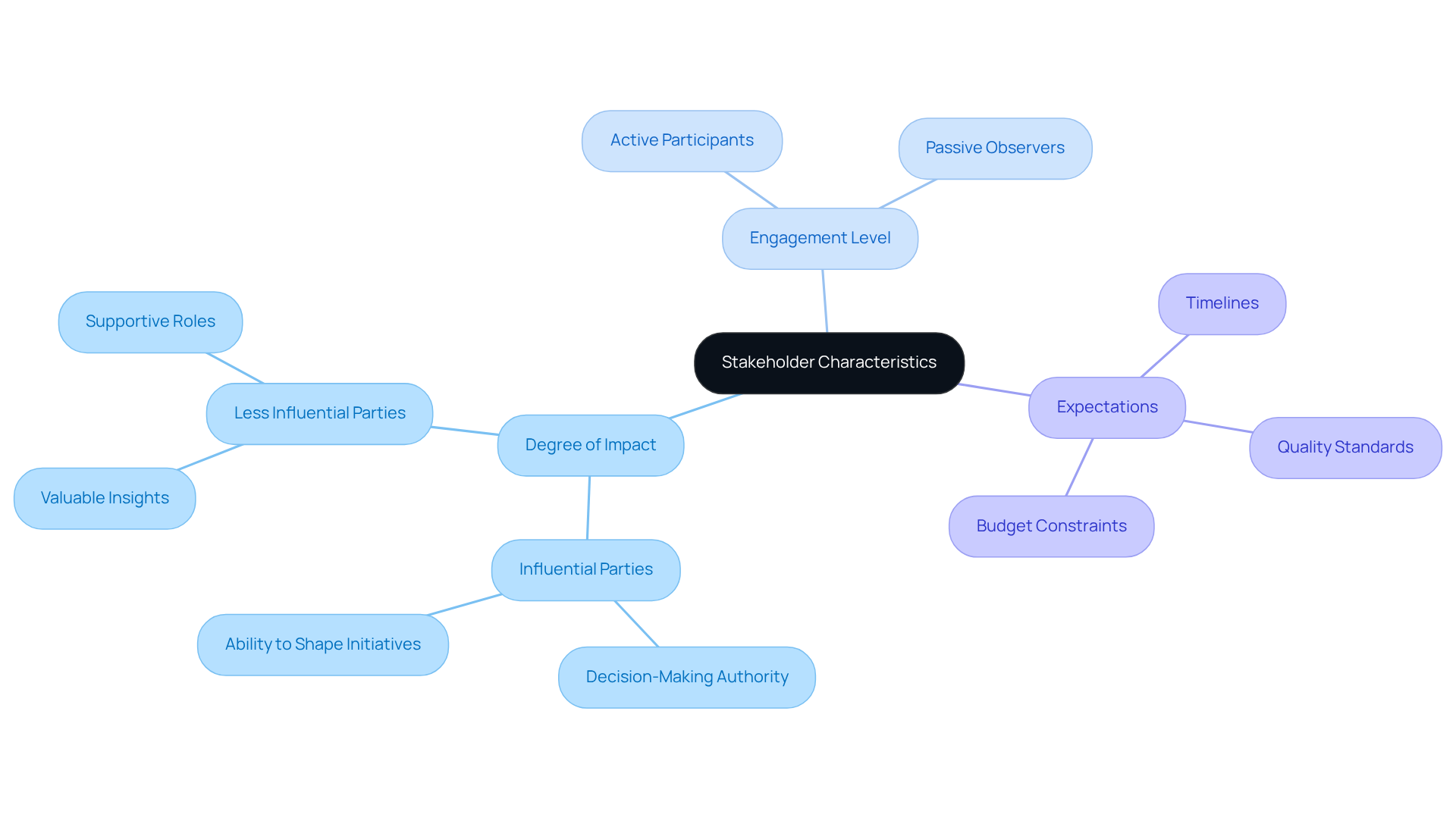Overview
A project stakeholder in project management is defined as any individual, group, or organization with a vested interest in the outcome of a project. These stakeholders possess the ability to influence or be influenced by the project's decisions and activities. Understanding the importance of identifying and engaging stakeholders is crucial, as their involvement significantly impacts project success. They provide essential resources, shape objectives, and foster collaboration throughout the project lifecycle. Therefore, it is imperative to actively engage stakeholders to maximize project outcomes.
Introduction
Understanding the dynamics of project management hinges on recognizing the pivotal role of stakeholders. These individuals or groups possess a vested interest in the project's outcome, influencing its direction and success. By delving into the definition and significance of project stakeholders, readers will uncover essential strategies for engaging these key players effectively.
However, what occurs when stakeholder interests clash, or when their needs are overlooked? Exploring these challenges reveals the critical importance of proactive engagement and communication in ensuring project success.
Define Project Stakeholder in Project Management
What is a project stakeholder in project management? A stakeholder is defined as any individual, group, or organization that possesses a vested interest in the outcome of an initiative. This definition relates to what is a project stakeholder in project management, referring to those who can influence or be influenced by the decisions, activities, or outcomes of the initiative.
Stakeholders can range from:
- Team members
- Managers
- External parties such as clients
- Suppliers
- Regulatory bodies
Moreover, understanding what is a project stakeholder in project management and who the involved parties are is crucial for the effective management of the initiative, as their interests and impacts can significantly affect the success of the endeavor.

Explain the Importance of Stakeholders in Project Success
Understanding what is a project stakeholder in project management is pivotal to the success of any initiative, as they provide essential resources, influence decisions, and help to define objectives. Engaging interested parties early in the initiative lifecycle helps clarify what is a project stakeholder in project management, fostering teamwork and ensuring their needs and expectations are met. This proactive strategy not only cultivates greater support from what is a project stakeholder in project management but also reduces resistance and enhances alignment with organizational objectives.
An initiative that actively involves its participants is statistically more likely to achieve its goals and deliver value, as these individuals contribute insights that refine planning and execution. Furthermore, transparency and accountability from sponsors are critical for garnering support from stakeholders, which raises the question of what is a project stakeholder in project management, particularly in large-scale endeavors.
Timely communication and involvement are vital for addressing evolving participant concerns, ensuring that diverse priorities are recognized and integrated into the planning process. Understanding what is a project stakeholder in project management involves classifying them into public and private sectors, each possessing distinct interests that shape project dynamics. Acknowledging these complexities and addressing the challenges in securing stakeholder support can significantly enhance the effectiveness of engagement strategies.

Identify Types of Project Stakeholders
In project management, understanding what is a project stakeholder in project management involves categorizing project participants into two primary groups: internal and external parties.
- Internal participants include team members, managers, and executives who are actively involved in the initiative.
- Conversely, external parties encompass clients, suppliers, regulatory agencies, and the community, all of whom may be affected by the initiative's outcomes.
Furthermore, interested parties can be divided into primary and secondary classifications.
- Primary parties are those with a direct stake in the initiative, while secondary parties may have an indirect interest.
Understanding what is a project stakeholder in project management is crucial for tailoring communication and engagement strategies that effectively address the unique needs of each group.

Analyze Stakeholder Characteristics and Expectations
Stakeholder characteristics can vary widely, significantly influencing their expectations and engagement levels. Essential traits encompass their degree of impact, engagement in the initiative, and potential effects on results.
For instance, influential parties, such as initiative sponsors, possess considerable decision-making authority and can shape the course of the initiative. Conversely, individuals with lesser influence may still offer valuable insights that enhance execution.
Understanding these traits allows managers to prioritize engagement initiatives, ensuring that the most influential participants are adequately informed and involved throughout the lifecycle of the initiative. Moreover, recognizing stakeholder expectations—such as timelines, quality standards, and budget constraints—enables project teams to align their objectives with stakeholder needs. This alignment fosters a collaborative environment that enhances project success.

Conclusion
Understanding the role of project stakeholders in project management is essential for the success of any initiative. Stakeholders, encompassing a wide range of individuals and organizations, hold a vested interest in the outcomes of projects and can significantly influence or be influenced by project decisions. Recognizing their diverse interests and impacts is crucial for effective project management and achieving desired results.
Engaging stakeholders early in the project lifecycle is vital, as their involvement fosters collaboration, reduces resistance, and aligns the project with organizational objectives. Stakeholders can be categorized into internal and external groups, as well as primary and secondary classifications. This categorization emphasizes the need for tailored communication strategies to address their unique needs. Furthermore, understanding stakeholder characteristics and expectations enhances engagement efforts, ensuring that the most influential parties are prioritized throughout the project.
Ultimately, the significance of stakeholders in project management cannot be overstated. By actively involving stakeholders and addressing their concerns, project managers can create a supportive environment that enhances project success. Engaging stakeholders not only contributes to achieving project goals but also builds lasting relationships that can benefit future initiatives. Embracing this understanding is vital for anyone looking to navigate the complexities of project management effectively.
Frequently Asked Questions
What is a project stakeholder in project management?
A project stakeholder is any individual, group, or organization that has a vested interest in the outcome of a project. They can influence or be influenced by the decisions, activities, or outcomes of the initiative.
Who can be considered project stakeholders?
Project stakeholders can include team members, managers, external parties such as clients, suppliers, and regulatory bodies.
Why is it important to understand project stakeholders in project management?
Understanding project stakeholders is crucial for effective management of the initiative, as their interests and impacts can significantly affect the success of the project.




